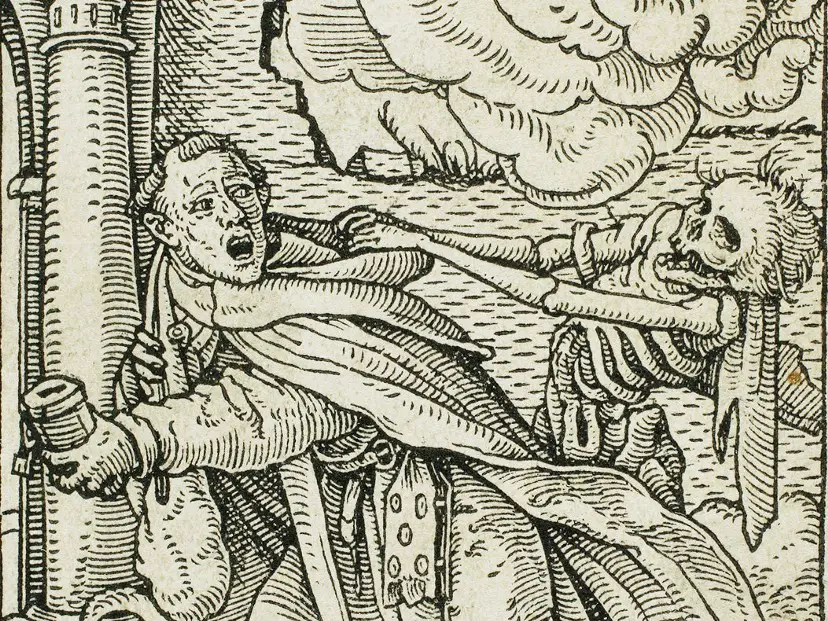 he “English Sweat” known in modern times as the sweating sickness is a disease that is often shadowed by the bubonic plague during the Medieval era, which is why many people are not aware of it. In research done by experts from Oxford, they have identified that only 60% of the deaths that occurred during the bubonic plague pandemic were actually caused by the plague whilst the other 40% were due to other diseases such as sweating sickness.
he “English Sweat” known in modern times as the sweating sickness is a disease that is often shadowed by the bubonic plague during the Medieval era, which is why many people are not aware of it. In research done by experts from Oxford, they have identified that only 60% of the deaths that occurred during the bubonic plague pandemic were actually caused by the plague whilst the other 40% were due to other diseases such as sweating sickness.
A quick killer
The bubonic plague was known for the slow and painful death it incurred on its victims, whilst the sweating sickness was killing its victims in under 24 hours, giving very little time for the disease to be treated, if possible. What made Europe and the whole world so scared of this disease was how deadly it was in comparison to the bubonic death (also known as the Black Death).
The Holinshed’s Chronicles, published in 1557, describe just how lethal the disease was, making it sound like the worst thing the world had encountered at that time. The chronicles were written by authors whose grandparents had passed away due to sweating sickness. Some of the symptoms provoked by the sweating sickness are recorded in the chronicles:
- high fever
- powerful chills
- nausea
- sharp abdominal pain
- swollen throat
Symptoms would manifest abruptly and after a few hours they would disappear and the patient would sweat abundantly, hence the name of the sweating sickness. After the sweat stopped death would soon arrive. The nickname “English sweat” was given as most of the early cases were discovered in England, although people were not sure what it was, thinking that it may have been people manifesting in a different way to the bubonic plague or other contemporary common diseases.


Two famous cases were of Henry Brandon, the second Duke of Suffolk, and his brother Charles Brandon who both died from sweating sickness in 1551. The biggest periods when this disease was present were in 1485, 1508, 1517, 1528, and 1551. Strangely enough, after 1551 the sweating sickness seems to have disappeared. Even so, medics such as John Caius or Thomas Forrestier didn’t stop analyzing the disease and looking for some sort of treatment.
Medics from the Astrid Queen military hospital in Brussels have done some extensive research to find out that, interestingly enough, this disease had connections to the coup Henry Tudor had thrown against Richard III in 1485 as the first signs of this illness were discovered at the Bosworth battle when Sir Stanley used the disease as an excuse to retreat his army. Henry’s army which consisted of 15,000 troops had died in less than six weeks.
Unknown origin
Although the first major epidemic took place in England, researchers and historians found out that this disease may have a different origin. It is possible that the sweating sickness was brought to England by Henry Tudor’s mercenaries who had previously fought in Rhodes in a military campaign against the Ottoman Empire in 1480. It is possible that the mercenaries carried the disease without knowing because they could have been asymptomatic.
There is no specific number of how many deaths this disease caused but it is definitely in the hundreds of thousands at least. In the early 1500s, many workers from England had migrated to Germany, and that is how the disease got carried into the heart of Europe. As far as it goes, the disease seemed to stay inside of Europe as no other cases have been recorded in other parts of the world.
Microbiologists are still scratching their heads in search of answers that would unveil the origin of these diseases as well as the reason they disappeared all of a sudden in 1551. What is scarier is knowing that this disease could be dormant in our genes, waiting to awaken and provoke havoc once again.
Avid Writer with invaluable knowledge of Humanity!
Upcoming historian with over 30 million views online.
“You make your own life.”





